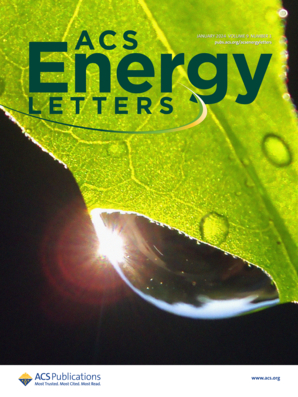Multiscale Structure Regulation Induced by Fluorine Coordination Enables High-Performance and Durable PEMFC
IF 19.3
1区 材料科学
Q1 CHEMISTRY, PHYSICAL
引用次数: 0
Abstract
The stability enhancement of metal–nitrogen–carbon (M–N–C) is often inevitably accompanied by a loss of activity. Additionally, during the long-term operation, the activity frequently declines due to water flooding effects, significantly reducing the lifetime of the membrane electrode assembly (MEA). Herein, fluorine (F)-doping was employed to bypass the activity–stability trade-off of Fe–N–C catalysts. F incorporation increases the metal dissolution energy and lowers the electron density of Fe–N4 sites, improving both stability and catalytic activity. Besides, the hydrophobicity of F can improve water management performance within the MEA, markedly reducing oxygen transport resistance. As a result, the F-doped Fe–N–C cathode enables a high peak power density of 1.1 W cm–2, far exceeding the Fe–N–C counterpart (0.79 W cm–2). More importantly, 90% of the power density can be retained after 30000 cycles of accelerated stress testing, demonstrating huge application potential in fuel cells.

氟配位诱导的多尺度结构调节使PEMFC高性能和耐用
金属-氮-碳(M-N-C)稳定性的增强往往不可避免地伴随着活性的丧失。此外,在长期运行过程中,由于水驱效应,活性经常下降,大大降低了膜电极组件(MEA)的寿命。本文采用氟(F)掺杂来绕过Fe-N-C催化剂的活性-稳定性权衡。F的加入增加了金属溶解能,降低了Fe-N4位点的电子密度,提高了稳定性和催化活性。此外,F的疏水性可以改善MEA内的水管理性能,显著降低氧运输阻力。结果,掺f的Fe-N-C阴极的峰值功率密度达到1.1 W cm-2,远远超过Fe-N-C阴极的峰值功率密度(0.79 W cm-2)。更重要的是,经过3万次加速应力测试,其功率密度可保持90%以上,在燃料电池中具有巨大的应用潜力。
本文章由计算机程序翻译,如有差异,请以英文原文为准。
求助全文
约1分钟内获得全文
求助全文
来源期刊

ACS Energy Letters
Energy-Renewable Energy, Sustainability and the Environment
CiteScore
31.20
自引率
5.00%
发文量
469
审稿时长
1 months
期刊介绍:
ACS Energy Letters is a monthly journal that publishes papers reporting new scientific advances in energy research. The journal focuses on topics that are of interest to scientists working in the fundamental and applied sciences. Rapid publication is a central criterion for acceptance, and the journal is known for its quick publication times, with an average of 4-6 weeks from submission to web publication in As Soon As Publishable format.
ACS Energy Letters is ranked as the number one journal in the Web of Science Electrochemistry category. It also ranks within the top 10 journals for Physical Chemistry, Energy & Fuels, and Nanoscience & Nanotechnology.
The journal offers several types of articles, including Letters, Energy Express, Perspectives, Reviews, Editorials, Viewpoints and Energy Focus. Additionally, authors have the option to submit videos that summarize or support the information presented in a Perspective or Review article, which can be highlighted on the journal's website. ACS Energy Letters is abstracted and indexed in Chemical Abstracts Service/SciFinder, EBSCO-summon, PubMed, Web of Science, Scopus and Portico.
 求助内容:
求助内容: 应助结果提醒方式:
应助结果提醒方式:


